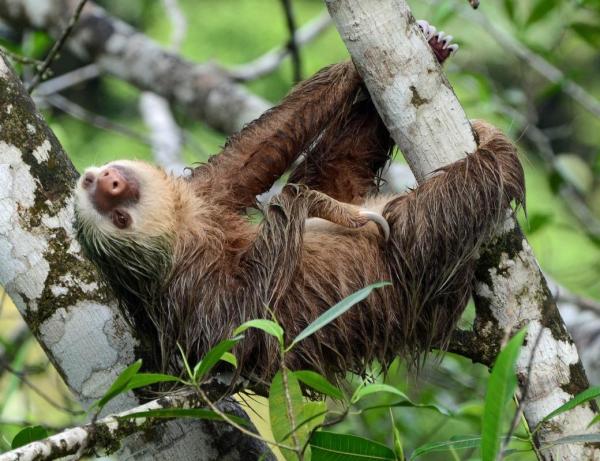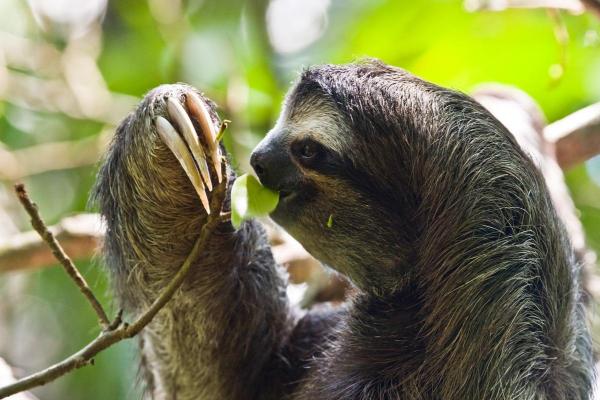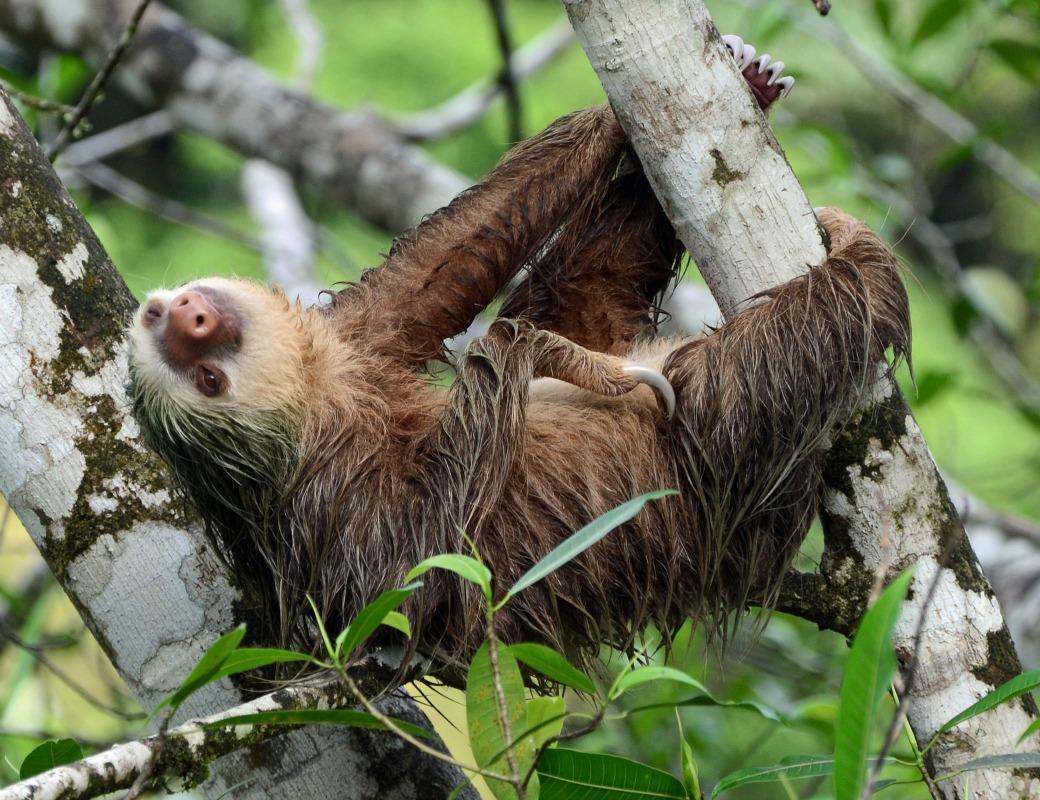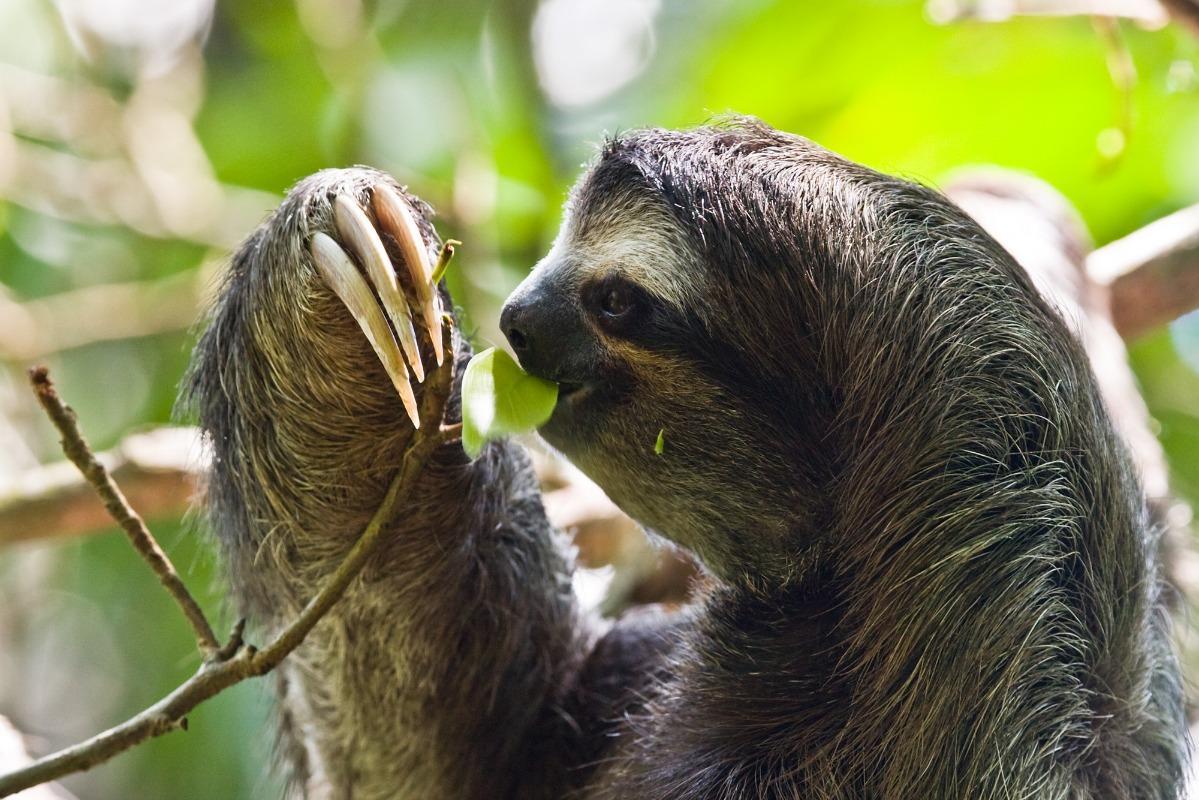Why Are Sloths So Slow?


Hanging upside down in the canopies of Central and South American rainforests, the sloth has earned its reputation as nature's chilliest mammal. These creatures move at an average pace of just 0.15 miles per hour, making them the undisputed champions of slowness in the animal kingdom. To put this in perspective, a garden snail can travel at approximately 0.03 miles per hour, meaning that a sloth moves only about five times faster than a creature without a spine or limbs.
In the following AnimalWised article, we explore why sloths are so slow, what does this mean for their survival and other interesting facts.
What are sloths?
Sloths are arboreal mammals known for their slow movement. They belong to the order Pilosa and are related to anteaters and armadillos. There are six species of sloths divided into two families: two-toed sloths and three-toed sloths.
Sloths are native to the tropical rainforests of Central and South America.
Sloths spend most of their lives hanging upside down in trees. A sloth's internal organs are attached to their ribcage, which prevents their lungs from being compressed when hanging upside down. Their specialized curved claws allow them to hang without expending energy. A sloth's grip is so strong that they sometimes remain hanging from branches even after death.
In fact, sloths only descend from trees about once a week to defecate. Sloths can lose up to one-third of their body weight when they defecate, which they only do about once a week.
Female sloths give birth while hanging from trees, and infants cling to their mothers for their first few months of life. However, baby sloths are born with teeth and can climb almost immediately after birth.
Interestingly, modern sloths had ancient relatives called giant ground sloths, which were enormous mammals that lived until around 10,000 years ago. These prehistoric cousins of today's sloths stood up to 20 feet tall when on their hind legs and weighed as much as 4-5 tons, comparable to modern elephants. Curious about more sloth facts? Check out our article with additional insights about these unique rainforest mammals.
How slow are sloths?
Sloths have perfected the art of survival through stillness. While often misinterpreted as laziness, their extreme slowness is actually their primary defense mechanism.
They move at an average pace of only 0.15 miles per hour, which is less than half the speed of a giant tortoise. This means a sloth would take about 5-6 hours to cross a single mile. On the ground, they crawl at just 6-8 feet per minute.
When they must move, they do so with efficiency. Sloths can rotate their heads 270 degrees thanks to extra vertebrae. This allows them to scan for dangers without shifting their bodies.

Why are sloths so slow?
This slowness is not laziness, but a survival strategy resulting from their distinct physiology and metabolic adaptations.
When a sloth remains nearly motionless, it becomes virtually invisible to predators like harpy eagles and jaguars that primarily hunt by detecting movement. This natural camouflage is enhanced by the algae that grows in the grooves of their fur, giving them a greenish tint that blends with the forest canopy.
At the core of sloth movement is their exceptionally low metabolic rate, which operates at just 40-45% of what would be expected for a mammal their size. In fact, it is the slowest of any non-hibernating mammal. This slow metabolism is directly tied to their specialized diet of leaves, which are low in nutrients and energy.
Sloths subsist almost exclusively on leaves, particularly cecropia leaves, which provide minimal nutritional value and calories. Their specialized stomachs, similar to those of cows, contain multiple chambers filled with symbiotic bacteria that break down the tough cellulose through fermentation. This is a process that can take up to a month to complete for a single meal.
Furthermore, unlike most mammals with both fast-twitch and slow-twitch muscle fibers, sloths possess predominantly slow-twitch muscles. These muscles use energy more efficiently but contract more slowly. Their muscles also contain fewer mitochondria, further limiting their capacity for rapid movement.
Energy conservation drives virtually every aspect of sloth physiology. Their body temperature fluctuates with their environment, rather than maintaining a constant high temperature like most mammals. Even their breathing and heart rates are remarkably slow. A sloth's heart beats at just 30% the rate expected for its size.
Do sloths ever move fast?
When threatened, sloths can move at speeds up to 4.5 feet (1.4 meters) per second, which is significantly quicker than their typical pace of about 6-8 feet per minute.
In water, sloths are actually quite capable swimmers. They can move about three times faster in water than on land and can hold their breath for up to 40 minutes.
Discover more about how a sloth's specialized diet contributes to their famously relaxed lifestyle in our other article.

How does climate affect sloths?
The tropical rainforests of Central and South America have shaped every aspect of sloth behavior. These dense, multilayered forest ecosystems provide the perfect environment for the sloth's specialized lifestyle.
The three-dimensional structure of the forest provides highways of interconnected branches where sloths can travel without descending to the ground, where they would be vulnerable to predators. Despite having poor eyesight, sloths have excellent memory of their territory and can remember routes through the forest canopy.
Studies have documented that sloths typically maintain a small home range of just 2-3 hectares, moving only about 38 meters per day.
As ectothermic animals that rely partly on external heat sources to regulate body temperature, sloths become even slower during cooler, rainy periods. Researchers have observed that during heavy rainfall, sloths often curl into a ball to conserve heat and may remain virtually motionless for hours. Conversely, they may position themselves to absorb morning sunlight, which helps raise their body temperature and slightly increases their metabolism and movement speed.
The vertical stratification of the rainforest also influences behavior. Two-toed sloths typically inhabit higher canopy levels than three-toed species, possibly reducing competition between species. For more information on the diverse ecosystem where sloths thrive, check out our guide to the animals that have adapted to life in the trees.

If you want to read similar articles to Why Are Sloths So Slow?, we recommend you visit our Facts about the animal kingdom category.








